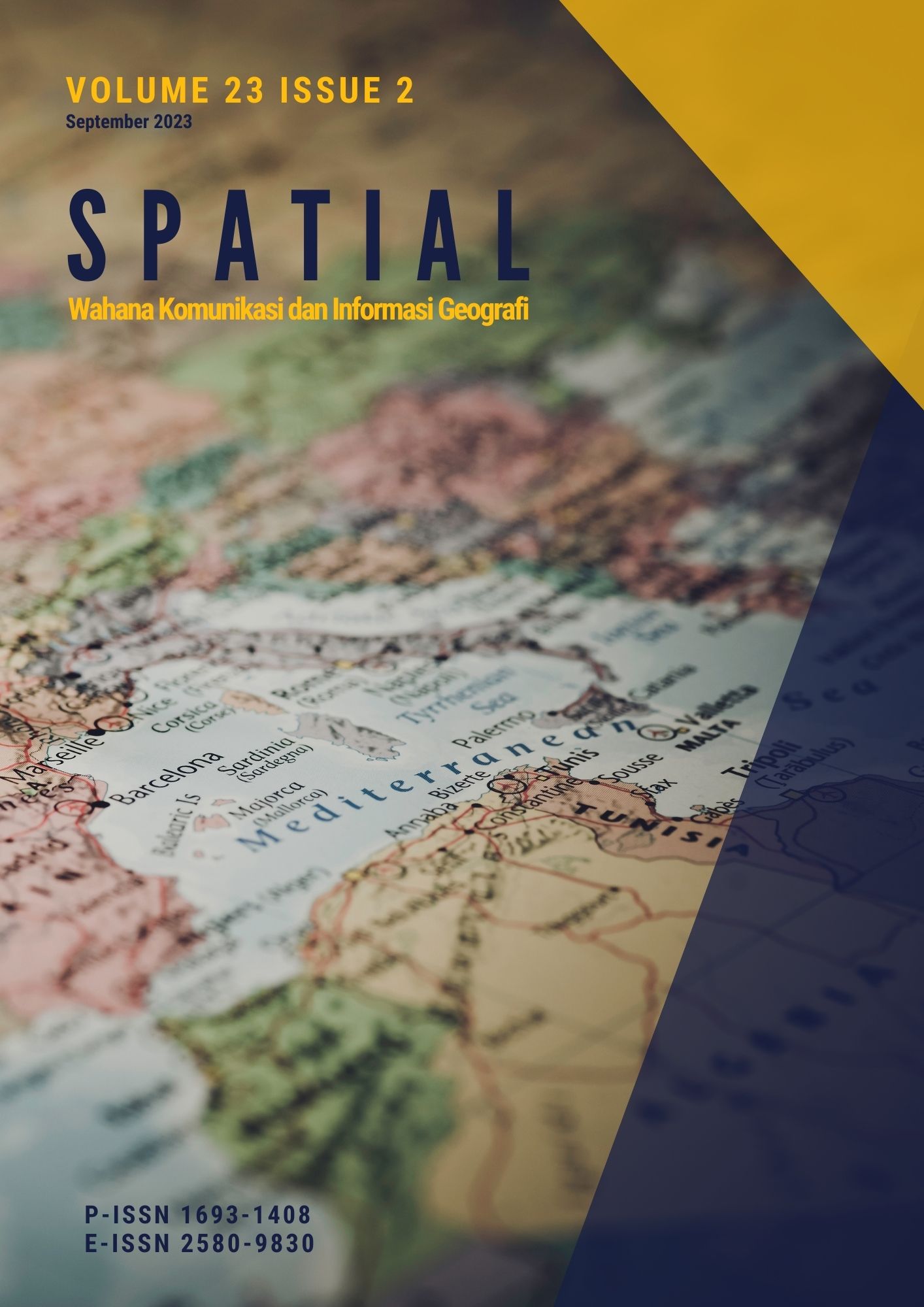Identifikasi Ketersediaan Ruang Terbuka Hijau dan Suhu Permukaan di Jakarta Selatan
DOI:
https://doi.org/10.21009/spatial.232.03Keywords:
Green spaces; Surface Temperature; NDVIAbstract
The effect of high population density is the reduction of green space areas, which enhances the risk of climate change impact. Green space has multifunction roles in ecology, social and economics. The provision of green space can reduce heat and pollution, improve water management and support health and well-being, essentially in densely urban areas. This study aims to identify the availability of green space areas considering the vegetation density and their implication for land surface temperature in South Jakarta. A remote sensing approach is deployed with the Normalized Difference Vegetation Index (NDVI) to analyze the green space areas and LST to identify the temperature of each district. The result shows that the majority of the district in South Jakarta has increased the number of green space areas. While the surface temperature in the neighbourhood, with growing green space areas, has the lowest temperature in 2021, Setiabudi District. On the other hand, Tebet District experienced the highest land surface temperature in 2021, around 29,6oC, which dedicated only 3.54 Km2 of green spaces, the smallest area amongst districts in South Jakarta.
Downloads
Published
How to Cite
Issue
Section
License
Copyright (c) 2023 Dayu Ariesta Kirana Sari, T. MHD. Rafli Fatani, Nugraheni Setyaningrum, Darmawan Listya Cahya, Laili Fuji Widyawati

This work is licensed under a Creative Commons Attribution 4.0 International License.
An author who publishes in the journal SPATIAL Wahana Komunikasi dan Informasi Geografi agrees to the following terms:
Author retains the copyright and grants the journal the right of first publication of the work simultaneously licensed under the Creative Commons Attribution 4.0 License that allows others to share the work with an acknowledgement of the work's authorship and initial publication in this journal
Author is able to enter into separate, additional contractual arrangements for the non-exclusive distribution of the journal's published version of the work (e.g., post it to an institutional repository or publish it in a book) with the acknowledgement of its initial publication in this journal.
Author is permitted and encouraged to post his/her work online (e.g., in institutional repositories or on their website) prior to and during the submission process, as it can lead to productive exchanges, as well as earlier and greater citation of the published work (See The Effect of Open Access).
This work is licensed under a https://creativecommons.org/licenses/by/4.0/









